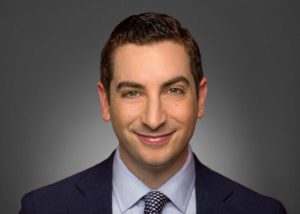Will NYC’s New Employment Discrimination Bill Restrict Casting “In the Heights”?
As recounted by my colleagues Jill Kahn Marshall and Anna Beckelman in their recent article, on May 11, 2023, the New York City Council passed a bill that prohibits discrimination in employment, housing, and access to public accommodation on the basis of someone’s actual or perceived height or weight. By adding height and weight as protected classes, the bill affords these characteristics the same legal protections as race, age, sex, disability, and other categories. Now, the bill is headed to the office of Mayor Eric Adams to be signed into law, making NYC poised to become the largest city in the United States to outlaw body size discrimination, alongside a select group of cities and states that have taken similar steps. This landmark legislation is set to have far-reaching effects across various industries within the city, including the entertainment sector and notably New York theater, including Broadway.
For Broadway theater, the bill will likely have lasting reverberations in casting decisions, workplace environments (such as backstage and rehearsal spaces), as well as standard office positions, such as public relations or theatre administration. For casting, the bill raises several complex questions. For example, will the law now prevent casting directors from imposing preferences for certain body types for certain stage roles? Will casting directors and producers be able to consider a performer’s height and weight when replacement casting for a given role in order to avoid the cost of recreating costumes due to significant differences in height and weight between prior and replacement actors?
The process of casting, by nature, is often subjective and depends heavily on a director’s and writer’s vision for a role, generally making it challenging to establish grounds for exclusionary or discriminatory practices if an individual feels unfairly treated. However, were a casting call notice to include specific language that seeks performers of certain height or body types, the law may be implicated.
And yet, one can envision situations where creative and practical considerations would warrant evaluation of height and weight in casting a role. For example, historically the role of Peter Pan has been played by a shorter and smaller person, due to Peter Pan’s portrayal as a boy (who will never grow up), and presumably to allow for easier flying mechanisms, when in the past, flying was performed with manual hoists. By way of further example, to the extent that a theatrical production intends to be realistic and includes casting of a historical figure, one would expect that that an actor may be selected in an attempt to resemble the height and weight of the historical person. So, a realistic portrayal of Abraham Lincoln, who was 6’4” and roughly 185 pounds during his presidency, absent restriction on such considerations in casting, would likely result in casting a taller person of similar weight. But choosing an actor based on these attributes could be argued as illegal in New York City under the forthcoming law.
However, currently, the bill specifically states than an exemption for employers will exist where a person’s height or weight prevents them from performing the “essential requirements of a job and no alternative is available or [height and weight] criteria is reasonably necessary for the normal operation of the business.”
Generally, height requirement, may be “essential requirements of a job” for some employees outside the scope of entertainment performers, such as flight attendants who must be tall enough to reach the overhead emergency equipment. It is expected that similar arguments will be made that artistic license mandates height and weight discrimination in some character castings as reasonably necessary for the normal operation of the business or as an essential requirement of the given role, thus warranting defense and protection from liability under the law. In the past, casting, given its significance to the creative process, has been given a wide latitude by courts from discrimination claims based on other protected characteristics, it remains to be seen if the same is true for application of the bill limiting discrimination based on weight and height.
And merely because a vision in casting that seeks actors of a certain height or weight is deemed “essential” does not eliminate the possible backlash in application. In 2016, Broadway’s Hamilton faced accusations of discrimination when it specifically sought “nonwhite” performers in a casting call. The show’s producer cited a legal theory akin to the exceptions outlined in the new bill for height and weight discrimination (the bona fide occupational qualification exception) in arguing that the casting desired was protected from laws protecting discrimination based on race. The casting call, which was intended to comply with the artistic vision of the show and rectify historic underrepresentation on Broadway, however also sparked a debate as to where the boundaries between artistic expression and discrimination lie. Eventually the casting call was amended to instead encourage people of all ethnicities to audition.
While the full impact of the bill on Broadway and casting calls remains to be seen, its passage marks an important step for supporters of size diversity. If Mayor Adams signs the bill into law, it is expected that, regardless of any warranted exceptions to the law’s application, theater lovers can look forward to more body-positive and diverse Broadway productions, where talent and creativity can thrive irrespective of an individual’s height or weight.

This article is intended as a general discussion of these issues only and is not to be considered legal advice or relied upon. For more information, please contact RPJ Partner Ethan Krasnoo who counsels clients in areas of complex commercial litigation, arbitration, mediation and dispute resolution, and employment, intellectual property, and entertainment and media. Mr. Krasnoo is admitted to practice law in New York, the United States District Courts for the Southern and Eastern Districts of New York, the United States Court of Appeals for the Second Circuit and United States Tax Court.
